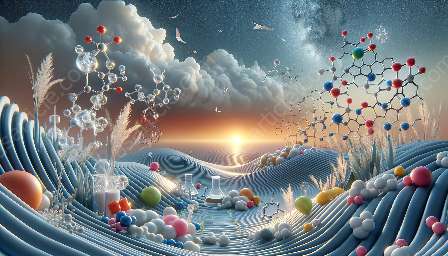Polymer-polymer miscibility is an essential aspect of polymer composites, mixtures, and polymer sciences, influencing the properties, applications, and processing of these materials. This topic cluster aims to provide a comprehensive understanding of polymer-polymer miscibility and its connections to related fields.
Understanding Polymer-Polymer Miscibility
Polymer-polymer miscibility refers to the ability of two or more polymers to mix and form a single phase at the molecular level, resulting in a homogenous blend. This behavior is influenced by the chemical, physical, and thermodynamic interactions between the polymers.
Polymer-polymer miscibility plays a crucial role in determining the properties of polymer blends, such as mechanical strength, thermal stability, and optical clarity. Understanding the factors that govern miscibility is essential for tailoring the performance of polymer composites and mixtures.
Connection to Polymer Composites and Mixtures
Polymer-polymer miscibility directly impacts the fabrication and performance of polymer composites and mixtures. In composites, the miscibility of polymer matrices with reinforcing fillers or fibers influences the adhesion at the interface, ultimately affecting the overall mechanical and thermal properties of the composite.
Furthermore, in the case of polymer mixtures, the miscibility of different polymers determines the phase behavior, blend morphology, and processing conditions. Achieving desired miscibility is crucial for developing polymer blends with tailored properties for specific applications.
Exploring Polymer Sciences
In the realm of polymer sciences, the study of polymer-polymer miscibility provides insights into the fundamental principles governing the behavior of polymer systems. Researchers delve into the thermodynamics, phase behavior, and molecular interactions driving polymer miscibility, paving the way for the development of advanced materials with enhanced performance.
Moreover, the understanding of polymer-polymer miscibility contributes to the design and optimization of polymer processing techniques, including extrusion, injection molding, and additive manufacturing.
Properties, Applications, and Challenges
Exploring the properties of polymer-polymer miscible blends unveils a wide range of applications, including packaging materials, adhesives, coatings, and biomedical devices. The enhanced properties, such as improved impact resistance, transparency, and chemical resistance, make these blends attractive for various industries.
However, achieving and maintaining polymer-polymer miscibility poses challenges, particularly when dealing with incompatible polymer pairs or when aiming for specific blend morphologies. Researchers and engineers continue to tackle these challenges through advanced characterization techniques, computational modeling, and novel polymer design strategies.
Conclusion
The intricate relationship between polymer-polymer miscibility and its connection to polymer composites, mixtures, and polymer sciences underscores the importance of delving deeper into this topic. By gaining a thorough understanding of polymer-polymer miscibility, researchers and practitioners can unlock new possibilities for creating high-performance polymer materials tailored to meet diverse industry needs.

